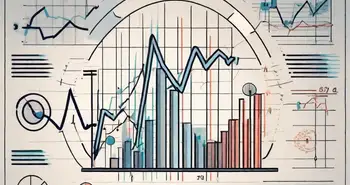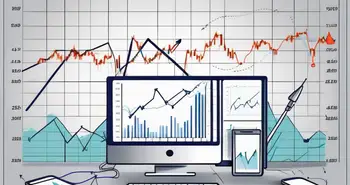Learn to Trade the Market: A Comprehensive Guide for Beginners

In today's rapidly changing financial landscape, trading in the market has become an attractive endeavor for many individuals seeking to grow their wealth. However, for beginners, understanding the intricacies of trading can be quite overwhelming. Fear not! In this comprehensive guide, I will take you through the fundamentals of trading, helping you gain a solid foundation to embark on your trading journey with confidence.
Understanding the Basics of Trading
Before we dive into the fascinating world of trading, let's begin by demystifying what exactly trading entails. In its essence, trading refers to the buying and selling of financial instruments, such as stocks, bonds, currencies, or commodities, with the aim of making a profit.
Trading is a dynamic and ever-evolving field that has captured the attention of individuals and institutions alike. It offers an opportunity to participate in the global financial markets, where billions of dollars are exchanged daily. By understanding the basics of trading, you can embark on a journey that has the potential to be both intellectually stimulating and financially rewarding.
What is Trading?
Trading involves capitalizing on the inherent volatility of financial markets. As prices fluctuate due to various factors, traders aim to anticipate these price movements and take advantage of them to generate profits. It requires a combination of analytical skills, market knowledge, and the ability to make quick decisions under pressure.
Successful traders employ a variety of strategies and techniques to navigate the complex world of trading. They use technical analysis, fundamental analysis, and even psychological analysis to gain insights into market trends and make informed trading decisions.
Different Types of Trading
There are various types of trading strategies available, each catering to different risk appetites and trading styles. Some popular types of trading include day trading, swing trading, and long-term investing. Day trading involves opening and closing positions within the same trading day, taking advantage of short-term price fluctuations. Swing trading, on the other hand, focuses on capturing medium-term price movements over a few days to a few weeks. Long-term investing, as the name suggests, involves holding positions for an extended period, often years, with the expectation of significant returns.
Each trading style has its own advantages and challenges. Day trading requires constant monitoring of the markets and quick decision-making skills. Swing trading requires a more patient approach, as traders wait for favorable price movements to materialize. Long-term investing demands a strong conviction in the underlying assets and the ability to withstand short-term market fluctuations.
Key Trading Terminology
As with any specialized field, trading has its own jargon that can seem perplexing at first. Familiarizing yourself with key trading terminology, such as “bid,” “ask,” “spread,” and “stop-loss,” among others, will go a long way in helping you understand the intricacies of trading.
The bid price refers to the highest price a buyer is willing to pay for a particular financial instrument, while the ask price represents the lowest price a seller is willing to accept. The spread is the difference between the bid and ask prices and serves as a measure of market liquidity. A stop-loss order is a predetermined price level at which a trader exits a position to limit potential losses.
By understanding and using these trading terms effectively, you can communicate with other traders, analyze market data, and execute trades with confidence.
Setting Up Your Trading Account
Now that you have a foundational understanding of trading, it's time to set up your trading account. Here are a few crucial steps to guide you through the process:
Setting up a trading account is an exciting step towards becoming a trader. It opens up a world of opportunities to participate in the financial markets and potentially grow your wealth. But before you jump right in, there are some important considerations to keep in mind.
Choosing the Right Trading Platform
When selecting a trading platform, consider key factors such as reliability, user-friendliness, available features, and customer support. A reliable platform ensures that you can execute trades without any technical glitches or interruptions. User-friendliness is important because you want to be able to navigate the platform easily and efficiently. Look for platforms that offer a demo account, allowing you to practice trading with virtual funds before risking your hard-earned money. This gives you a chance to familiarize yourself with the platform's interface and test your trading strategies in a risk-free environment.
Furthermore, it's crucial to choose a platform that aligns with your trading goals and preferences. Some platforms may specialize in certain markets or offer unique features that cater to specific trading styles. Take the time to research and compare different platforms to find the one that suits your needs best.
Understanding Trading Fees
It's important to understand the fees associated with trading. These can include commissions, spreads, and overnight funding charges. Commissions are fees charged by the broker for executing your trades. Spreads, on the other hand, refer to the difference between the buying and selling price of an asset. Overnight funding charges may apply if you hold positions overnight.
Before choosing a trading platform, it's crucial to research and compare fees across different platforms. Some platforms may have lower commissions but wider spreads, while others may have higher commissions but tighter spreads. Consider your trading strategy and financial goals when evaluating fees. If you are a frequent trader, even small differences in fees can add up over time and impact your overall profitability.
How to Secure Your Trading Account
Protecting your trading account from unauthorized access is paramount. With the increasing prevalence of cyber threats, it's essential to take proactive measures to safeguard your account.
First and foremost, utilize strong, unique passwords for your trading account. Avoid using easily guessable passwords or reusing passwords from other accounts. A strong password should include a combination of uppercase and lowercase letters, numbers, and special characters.
In addition to a strong password, enable two-factor authentication (2FA) for an additional layer of security. 2FA requires you to provide a second form of verification, such as a unique code sent to your mobile device, in addition to your password. This adds an extra barrier against unauthorized access even if someone manages to obtain your password.
Regularly updating your software is also crucial for maintaining the security of your trading account. Software updates often include security patches that address vulnerabilities and protect against potential threats. By keeping your trading platform and other related software up to date, you reduce the risk of falling victim to cyber attacks.
Lastly, be cautious of phishing attempts or suspicious emails requesting personal information. Phishing is a common tactic used by cybercriminals to trick individuals into revealing their login credentials or other sensitive information. Always verify the authenticity of any communication you receive and avoid clicking on suspicious links or providing personal information unless you are certain of the source.
By following these steps, you can set up your trading account with confidence, knowing that you have taken the necessary precautions to protect your funds and personal information.
Developing a Trading Strategy
With your trading account set up, it's time to develop a trading strategy that suits your risk tolerance and financial goals. Here are a few key considerations:
Fundamental Analysis vs Technical Analysis
Two popular approaches to analyzing financial markets are fundamental analysis and technical analysis. Fundamental analysis involves studying economic indicators, company financials, and market trends, while technical analysis relies on price patterns and historical data. Exploring both techniques will help you make informed trading decisions.
Risk Management in Trading
A crucial aspect of successful trading is implementing effective risk management strategies. This includes setting stop-loss orders, diversifying your portfolio, and understanding your risk tolerance. Remember, managing risk is about preserving capital and minimizing potential losses.
Importance of a Trading Plan
Creating a trading plan is vital for maintaining discipline and structure in your trading journey. Your trading plan should outline your goals, preferred trading styles, risk management strategies, and criteria for entering or exiting trades. Regularly evaluate and adjust your plan based on market conditions and personal experience.
Executing Your First Trade
Now that you have a solid understanding of the essentials, it's time to execute your first trade. Let's go through the necessary steps:
How to Place a Trade
Placing a trade involves selecting the financial instrument you want to trade and deciding whether you want to buy or sell. Enter the trade size and order type, such as market or limit, and click the appropriate button to execute the trade. Always double-check your trade details before confirming.
Understanding Order Types
Order types determine the conditions under which your trade is executed. Market orders are executed at the current market price, while limit orders allow you to set a specific price at which your order will be executed. Stop-loss and take-profit orders are also valuable tools to manage risk and secure profits.
Monitoring Your Trade
Once your trade is executed, it's crucial to monitor its progress. Keep an eye on price movements, news updates, and any other relevant factors that could impact your trade. Consider utilizing stop-loss orders and trailing stops to protect your profits or limit potential losses.
Frequently Asked Questions
What is the difference between fundamental analysis and technical analysis?
While both fundamental analysis and technical analysis are used to evaluate financial markets, they adopt different approaches. Fundamental analysis focuses on studying economic indicators, company financials, and market trends, while technical analysis relies on analyzing price patterns and historical data.
How do I protect my trading account from unauthorized access?
Protecting your trading account involves implementing strong security measures. Select a reputable trading platform that offers features such as two-factor authentication and encryption. Use unique, complex passwords and be wary of phishing attempts or suspicious emails asking for personal information.
What is the importance of risk management in trading?
Risk management is essential in trading to preserve capital and minimize potential losses. It involves setting stop-loss orders, diversifying your portfolio, and understanding your risk tolerance. Implementing effective risk management strategies helps safeguard your trading capital and fosters long-term success.
Remember, trading requires commitment, continuous learning, and a disciplined approach. As you embark on your trading journey, always stay updated on market trends, explore different strategies, and most importantly, never stop learning.Now that you have a comprehensive guide to kickstart your trading journey, it's time to put your newfound knowledge into action. Best of luck on your exciting trading adventure!Stay tuned for more valuable tips and expert insights on trading in future articles.
As you consider the potential of stock trading and the broader cryptocurrency landscape, why not expand your investment horizon with Morpher? At Morpher.com, you can leverage the power of blockchain technology to trade across a multitude of asset classes, including cryptocurrencies, without the burden of fees or liquidity constraints. With the ability to engage in fractional investing, short selling, and up to 10x leverage, Morpher offers a unique and flexible trading experience that aligns perfectly with the innovative spirit of crypto mining. Take control of your investments with the safety of the Morpher Wallet and explore new market opportunities today. Sign Up and Get Your Free Sign Up Bonus to embark on a transformative trading journey with Morpher.

Disclaimer: All investments involve risk, and the past performance of a security, industry, sector, market, financial product, trading strategy, or individual’s trading does not guarantee future results or returns. Investors are fully responsible for any investment decisions they make. Such decisions should be based solely on an evaluation of their financial circumstances, investment objectives, risk tolerance, and liquidity needs. This post does not constitute investment advice.

Painless trading for everyone
Hundreds of markets all in one place - Apple, Bitcoin, Gold, Watches, NFTs, Sneakers and so much more.

Painless trading for everyone
Hundreds of markets all in one place - Apple, Bitcoin, Gold, Watches, NFTs, Sneakers and so much more.









